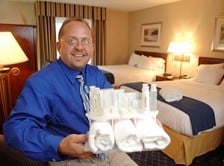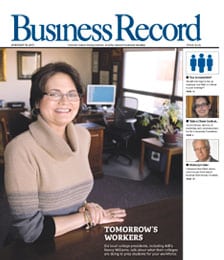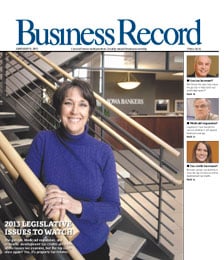The amenity game

.bodytext {float: left; } .floatimg-left-hort { float:left; margin-top:10px; margin-right: 10px; width:300px; clear:left;} .floatimg-left-caption-hort { float:left; margin-bottom:10px; width:300px; margin-right:10px; clear:left;} .floatimg-left-vert { float:left; margin-top:10px; margin-right:15px; width:200px;} .floatimg-left-caption-vert { float:left; margin-right:10px; margin-bottom:10px; font-size: 10px; width:200px;} .floatimg-right-hort { float:right; margin-top:10px; margin-left:10px; margin-bottom:10px; width: 300px;} .floatimg-right-caption-hort { float:left; margin-right:10px; margin-bottom:10px; width: 300px; font-size: 10px; } .floatimg-right-vert { float:right; margin-top:10px; margin-left:10px; margin-bottom:10px; width: 200px;} .floatimg-right-caption-vert { float:left; margin-right:10px; margin-bottom:10px; width: 200px; font-size: 10px; } .floatimgright-sidebar { float:right; margin-top:10px; margin-left:10px; margin-bottom:10px; width: 200px; border-top-style: double; border-top-color: black; border-bottom-style: double; border-bottom-color: black;} .floatimgright-sidebar p { line-height: 115%; text-indent: 10px; } .floatimgright-sidebar h4 { font-variant:small-caps; } .pullquote { float:right; margin-top:10px; margin-left:10px; margin-bottom:10px; width: 150px; background: url(http://www.dmbusinessdaily.com/DAILY/editorial/extras/closequote.gif) no-repeat bottom right !important ; line-height: 150%; font-size: 125%; border-top: 1px solid; border-bottom: 1px solid;} .floatvidleft { float:left; margin-bottom:10px; width:325px; margin-right:10px; clear:left;} .floatvidright { float:right; margin-bottom:10px; width:325px; margin-right:10px; clear:left;} A half century ago, a hotel was something found along a small highway, which offered a roof and a soft place to sleep at night. Today it means plush beds, thick towels, specialty soap products and wireless Internet access. And that’s just the standard.
Hotels are striving to stay ahead of other brands in a race to shower customers with more and more conveniences.
“It’s become an amenity game,” said Bob Conley, owner of R.J. Conley Hotel Group, whose properties include the Holiday Inn Downtown and Holiday Inn Express near Drake University.
The past few years have been especially intense. However, Conley believes that continually offering more amenities is part of a natural progression. “In the hotel business,” he said, “every amenity that starts out eventually becomes a standard.”
Though customers have responded favorably to the new luxuries, hotel managers say a lot is being driven by the hotel chains. They use amenities as a way to differentiate themselves from other brands as they market themselves to consumers.
“When you sign a franchise agreement, you sign away your right to an awful lot of choices when you run a hotel. The advantage of that is they bring you a lot of market share, but they control the product,” said Paul Rottenberg, president of Orchestrate Management, which runs the Hilton Garden Inn in Urbandale, Holiday Inn Express in Altoona and the Hotel Fort Des Moines, and is constructing TownPlace Suites in Johnston.
He points out that a lot of chains, such as Marriott and Hilton, have sold the majority of hotels they used to operate. “The brands are a lot more demanding because they’re not affected by the franchise demands on the franchisee,” he said.
Hotel managers admit that new amenities don’t increase occupancy levels; rather they help hotels maintain their market share in an increasingly competitive environment.
“We’re fighting harder for the same customer,” Rottenberg said.
Competition is especially heating up in Greater Des Moines, as new construction will bring nearly 900 new hotel rooms to the market. “With all the new hotels opening up,” Conley said, “it used to be that you could open a hotel and expect 75 to 80 percent occupancy. Now if you’re brand-new, you’re tickled to hit 60 percent.”
Conley believes people still choose hotels based on location, but within a small radius, they will select a hotel based on amenities. In Greater Des Moines, Rottenberg said middle-market hotels are especially high in demand.
Every new convenience comes with a price tag, and in recent years, hotel room rates nationally have increased faster than the rate of inflation.
According to Smith Travel Research, the average hotel rate in Greater Des Moines in July 2007 was $81.60, compared with $77.92 a year earlier.
Vicki Comegys, director of sales and services for the Greater Des Moines Convention and Visitors Bureau, said room rates have remained fairly steady in the Des Moines market after a spike 14 months ago. During the rapid increase, Greater Des Moines’ rates were 7 percent below the national average; now they’re 15 percent below.
Still, Conley believes the gradual increase in room rates will continue.
“With every amenity,” he said, “it has to be supported by an increase in revenue, so we’ve seen hotel rooms go from the standard $20 a room 30 years ago to now the standard is about $100 a room.”
Middle-market luxury
Just three years after Rottenberg’s company opened the Hilton Garden Inn, it had to replace all the beds to meet Hilton’s new standards. The linen package includes sheets with higher thread counts and mattresses that allow guests to adjust the firmness with a dial. The upgrade began last year and is expected to be completed in 2008.
Most hotels have jumped on the new-bedding craze.
Conley’s hotels have a new package, which costs about $1,200 per room and includes nicer sheets, four or five pillows and a duvet cover. Guests also can choose between soft or hard and feather or foam pillows. The Des Moines Marriott Downtown has introduced a new bedding package, which includes a new mattress and Egyptian sheets, costing the hotel a total of $300,000 to $400,000.
Hotels also have rolled out new bathroom features, including nicer soaps, lotions and shampoos, a curved shower rod, soft-rain showerheads and thicker towels.
David Dixon, general manager of the Holiday Inn Express near Drake, said Holiday Inn introduced these products as part of its Simply Smart collection. He offers guests nine of 12 bathroom products available through the brand, which range from shampoo to makeup remover and a vanity kit.
Many hotels are even allowing people to buy their bathroom and bedroom products.
According to Cindy Roberts, director of sales and marketing for the Marriott Downtown, most of those products “are really what people would buy for their homes, and a lot of hotels are going towards bedding and décor that is more homey.”
With most hotels already offering free wireless Internet access or an Internet connection in every room, many are moving toward replacing standard television sets with flat-screen models. Marriott is in the process of adding a new package called Plugged In, which allows guests to hook their laptop to the flat-screen TV to watch movies listen to music on their iPods.
Hotels also are expanding their services. What was a free continental breakfast now includes hot-food options, and more priority club members are receiving free cocktails in the afternoon.
Through its virtual concierge program, Marriott sends guests a letter a few days prior to arrival to see if they need something extra during their stay, such as a pillow filled with foam instead of feathers or sandwiches waiting for them when they arrive.
The Marriott Downtown also will begin renovating its lobby in 2008, which will provide more places for people to gather for drinks, while also working on their laptops and BlackBerries. The hotel already has changed the music selection it plays in the lobby and will install a scent machine near the front desk and public areas.
“It’s becoming an experience,” Conley said.
Most of these changes are taking place in the middle-market and limited-service hotels; higher-end and luxury hotels still charge guests for breakfast, Internet service and other amenities.
“The more you pay for your room,” Rottenberg said, “the more you pay for everything else.”
Independent hotels, such as Hotel Fort Des Moines, are not as caught up in the amenity war, Rottenberg said. However, Hotel Fort Des Moines was one of the first to offer free wireless Internet.
Brand driven
Despite hotels’ expanded offerings, Comegys of the CVB said the people she works with are most interested in location and point systems for priority members. Wireless Internet and free breakfast are also important, but she said, “I haven’t lost a group because we couldn’t do that.”
Though a lot of these changes are being handed down from the parent company, hotel operators say customers have responded favorably to new bedding and bathroom amenities.
However, changes such as flat-screen televisions seem brand-driven. “I’m not so sure they’re as customer driven,” Rottenberg said, “but brands wanting to stay cutting edge.”
A lot of the changes Marriott asks hotels to make, Roberts said, come from feedback from general managers, who look at guest surveys. Many of their technology changes are part of an effort to attract the tech-loving Generations X and Y.
Improvements also are a sign of a strong economy. Many hotel chains delayed investments in their brands after travel dropped following the 9/11 terrorist attacks. Now that occupancy levels and rates have recovered, hotels have reinvested in amenities and renovations. The Marriott Downtown’s $13.5 million renovation project, which was scheduled for around 2001, was delayed until 2006.
Though the national chains require their hotels to offer certain amenities, hotel managers say they give them plenty of time to implement the changes, which can allow hotels to better budget for them.
Standards also help ensure that older franchises don’t fall behind the look and offerings of newer hotels, which could affect the overall image of the brand, Rottenberg said.
Most hotel owners have come to expect amenity investment as part of the business. “Hotels are very capital intensive,” Rottenberg said. “You’ve got a life cycle on everything.”
“Implementations are mandatory, so we have to immediately figure out how to do it and not why to do it,” Conley said. “It’s just part of the business.”








